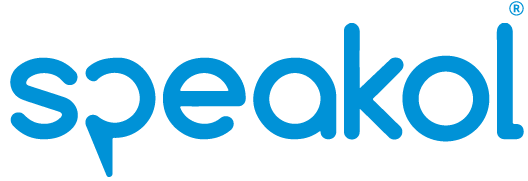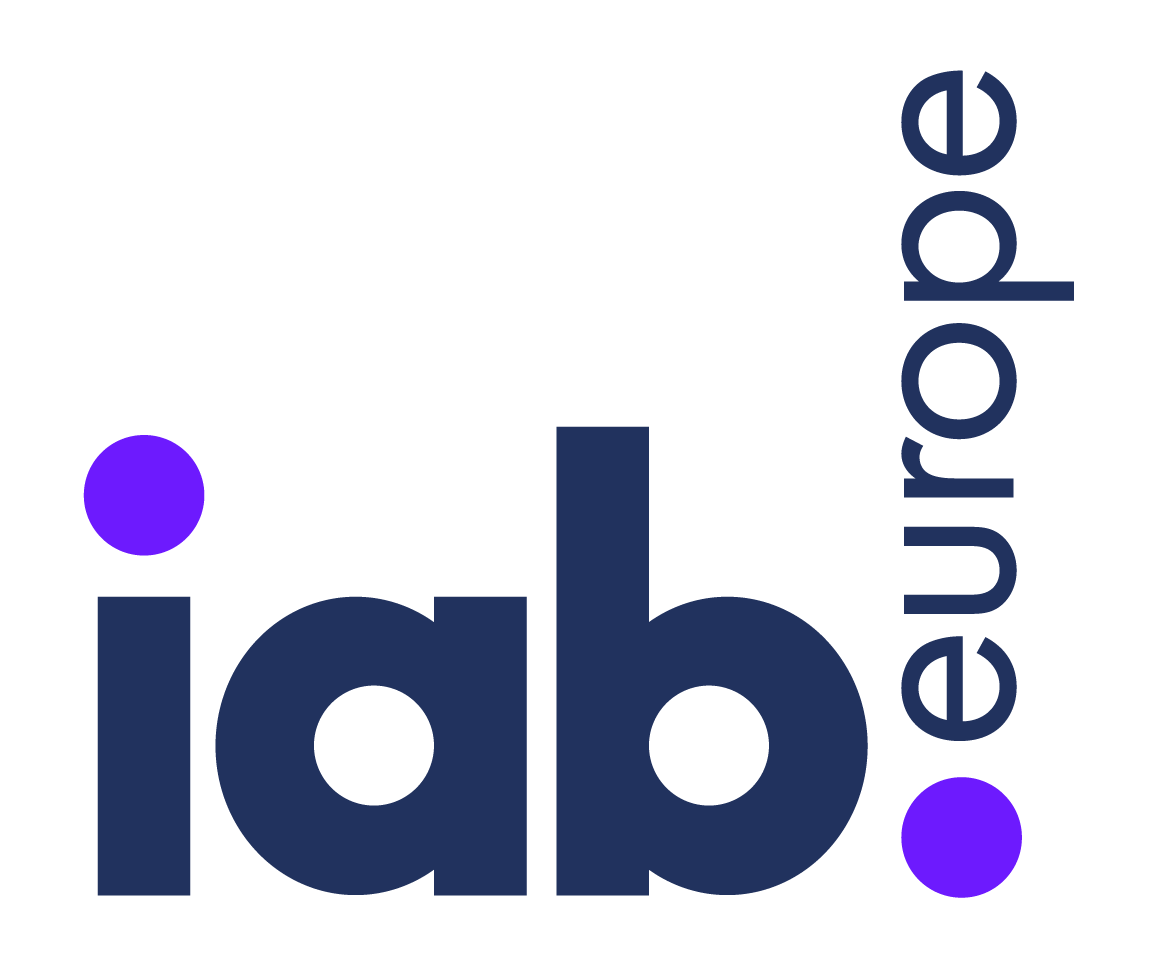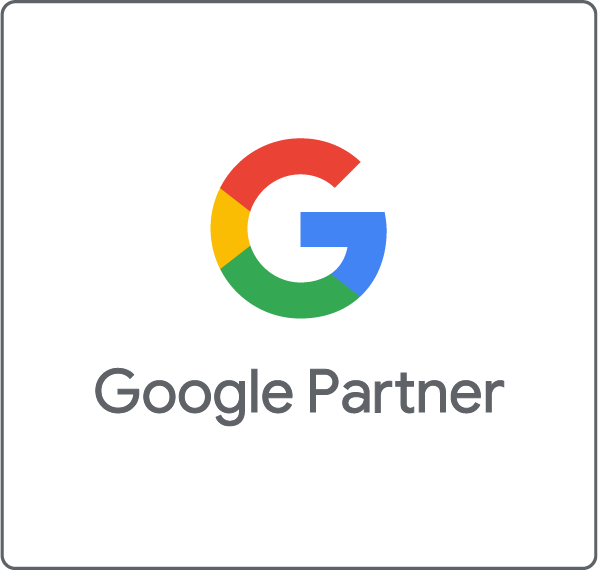5 خطوات لإنشاء وتحسين صفحة الهبوط الخاصة بك

إذا كان هدفك هو زيادة معدل التحويل من خلال حملاتك على منصة سبيكول، فيجب عليك استثمار الوقت والجهد في إنشاء صفحة الهبوط الخاصة بك.
صفحات الهبوط هي المكان الذي يتم توجيه المستخدمين إليه بمجرد النقر على أحد إعلانات حملتك. كلما كانت تجربة المستخدم التي توفرها صفحة الهبوط أفضل، كان من الأسهل بالنسبة للمستخدمين التنقل في الصفحة والعثور على المعلومات التي يحتاجون إليها، مما يؤدي في النهاية إلى الاشتراك في خدمة أو شراء منتج.
فيما يلي بعض النصائح التي يمكن أن تساعدك في تحقيق نتائج أفضل:
١- اكتب المحتوى الخاص بك:
-اعرض أولًا ثم قم بالبيع:
عندما يزور المستخدمون صفحتك لأول مرة، تحتاج إلى عرض خدمتك أو منتجاتك بوضوح. يجب أن تركز على التواصل مع المستخدمين بدلاً من إغراقهم في المحتوى التسويقي؛ وإلا فإنك تخاطر بفقدان عملائك المحتملين.
-كن دقيقًا:
اعرض مباشرة خدمتك أو منتجك. لكي يتعرف المستخدمون على منتجك وقيمته. تحتاج إلي تقديم حجة قوية حول سبب وجوب تسجيلهم أو طلب خدمتك أو شراء منتجك.
٢- صمم صفحتك:
-كن مختصرًا:
احرص على جعل محتواك المكتوب موجزًا؛ يتراوح ما بين ٤٠٠- ٦٠٠ كلمة. حيث يعد هذا أكثر من كافٍ لعرض خدمتك أو منتجك وكسب المستخدم دون تشويش أو تكرار.
-كن بسيطًا:
تأكد من أن تصميمك بسيط وجذاب.
-قابلية القراءة:
قم بتسليط الضوء على العناوين. واكتب فقرات قصيرة وواضحة وجذابة. وتأكد من أن الخط الذي تستخدمه قابل للقراءة.
– اختر الصورة الصحيحة:
استخدم صورة جذابة تعكس المحتوى إما في بداية الصفحة أو في منتصفها. وتأكد من أنها لا تشغل عرض الصفحة بالكامل، لكي يعلم القارئ أن هناك المزيد من المحتوى تحتها.
٣- تجربة المستخدم:
-كن ذكيًا في إضافة الروابط:
إذا كانت هناك حاجة لإضافة رابط صفحة هبوط خارجية، فتأكد من أن يكون فتح الرابط الجديد في علامة تبويب أو نافذة جديدة، حتى يتمكن المستخدم من العودة بسهولة إلى صفحتك.
-الظهور المفاجئ:
لوحظ أن المستخدمين عادة ما يغلقون إعلانات الظهور المفاجئ قبل قراءتها. لذلك، إذا كانت هناك حاجة لاستخدامها، فتأكد من ظهورها بعد تفاعل المستخدم تمامًا مع صفحتك المقصودة.
٤- الحث على اتخاذ إجراء معين: (افعل ولا تفعل)
– المكان:
- في الثلث الأسفل من صفحتك، يمكن أن تقوم بتشجيع الأشخاص على اتخاذ إجراء معين.
- يمكنك حث المستخدمين على الإجراء الأساسي المرغوب بنص مباشرة أسفل نص مقالتك.
- لا تضع نص طلب الإجراء الأساسي الخاص بك على الشريط الأيمن لسطح المكتب أو أسفل أزرار المشاركة أو التعليقات. حيث يمكن أن يتخطى المستخدمون الزر تمامًا.
-المحتوى:
- ما عليك سوى إخبار المستخدم لماذا يجب عليه اتخاذ إجراء.
- قدم للمستخدم حافزًا لاتخاذ الإجراء. مثل الخصم أو عرض أسعار أو أي قيمة مضافة أخرى تساعد على تحفيز المستخدمين وزيادة تحويلاتك.
- لا تشتت المستخدمين بإجراءات متعددة. يجب أن تركز على إجراء أساسي واحد.
- استخدم لغة دقيقة عملية، حتى يعلم المستخدم ما يمكن توقعه تحديدًا بمجرد الضغط على زر الإجراء المطلوب. كلمات مثل “اشترِ” و “اشترك” أفضل من الكلمات الأخرى الغامضة وغير الواضحة.
-الصيغة:
- استخدم طرقًا إبداعية لجعل القيام بالإجراء أكثر متعة. يمكنك استخدام صيغة الأسئلة، على سبيل المثال، لتحفيز المستخدمين على المتابعة واتخاذ الإجراءات.
- تجنب إنشاء نص الحث على الإجراء في شكل لافتة. ففي كثير من الأحيان، يتجاهل المستخدمون اللافتات تمامًا.
- لا تقم بإضافة نص الحث على الإجراء في آخر الصفحة. حيث من المرجح أن يتخطاها المستخدمون.
٥- النصائح وأفضل الممارسات:
–تحتاج إلى اختبار أ / ب للعناصر الرئيسية على صفحة الهبوط بشكل مستمر، للتأكد من أنه يمكنك تحقيق معدل التحويل المطلوب.
-جرب التنسيقات الجديدة وكن مبتكرًا ومبدعًا باستمرار. استخدم مقاطع الفيديو والصور والألعاب والمحتويات الفريدة الأخرى لجذب المزيد من المستخدمين.
مصطلحات سبيكول

1. اختبار أ/ب
عملية مقارنة بين نسختين لعنصر واحد مختلف، مع ثبات جميع المتغيرات الأخرى. يمكن أن يكون المتغير عنوان، أو صورة، أو صفحة الويب. يهدف اختبار أ/ ب إلى زيادة تفاعل المستخدم، مما يؤدي فيما بعد لنجاح الحملة..
2. الإجراءات
الأنشطة التي يقوم بها المستخدمون على صفحات الويب الخاصة بالمعلنين. وتتنوع الإجراءات بين دخول الصفحة والاشتراكات والمشتريات. ويتم تتبع هذه الإجراءات بواسطة كود Speakol pixel وتسجيلها على صفحة تتبع المعلنين.
3. هوية الحساب
الهوية والاسم الفريد للحساب على منصة سبيكول.\
4. الحساب
يشير إلى حسابات المعلنين المرتبطة بعناوين البريد الإلكتروني، وكلمات المرور. يمكن أن يتكون حساب المعلن من حملة واحدة أو أكثر.
5. الفوترة التلقائية
إنه شكل من أشكال الفواتير. يتم محاسبة المعلنين على أساس مبلغ تم الإتفاق عليه سابقًا مع سبيكول. وهذا المبلغ هو الميزانية التى تنفقها الحملة الإعلانية قبل أن يضطر المعلنون للدفع مرة أخرى. عادة ما تكون هذه الفواتير حوالي 100 دولار.
6. متوسط التكلفة بالنقرة
ويمثل متوسط المبلغ الذي ينفقه المعلنون في كل مرة يتم فيها النقر فوق أحد إعلانات الحملة. يمكن حساب متوسط التكلفة بالنقرة بقسمة التكلفة الإجمالية للنقرات على إجمالي عدد النقرات التي تلقتها إعلانات الحملة.
7. اسم العلامة التجارية
وهو النص الذي يظهر أسفل عناوين إعلانات الحملة أو الصور. يوضح اسم العلامة التجارية للمستخدمين ما تحتويه المقالة، مما يعطى إحساسًا بالمصداقية.
8. الحملة
وتشير إلى الحملة الإعلانية التي يقوم بإنشاءها المعلنين. حيث يقوم المعلنون بتحديد نص العلامة التجارية، والميزانية وتكلفة النقرة، بالإضافة إلى تحديد الجمهور المستهدف وإضافة إعلانات الحملة.
9. إعلانات الحملة
يتم عرض إعلانات الحملة من خلال وحدات سبيكول الإعلانية ليتم عرضها على المستخدمين.
10. النقرات
وهي إجمالي عدد نقرات المستخدم التي تلقتها إعلانات الحملة.
11. استهداف نوع المحتوى
تسمح هذه الميزة للمعلنين باستهداف ناشرين معينين أو مواقع ويب تهتم بمجالات معينة تهدف حملاتهم الإعلانية إلى الترويج لها. إذا حدد المعلنون نوع محتوى معين لاستهدافه، فلن تظهر إعلانات حملتهم إلا على مواقع الويب التي تقدم نفس المحتوى. لذلك على سبيل المثال، إذا كان لدى المعلن منتج تجميل، فلن تظهر إعلانات الحملة الخاصة بهذه الحملة إلا على مواقع الويب الخاصة بالجمال والبشرة.
12. التحويلات
يحدث التحويل بمجرد أن يتخذ المستخدم إجراءًا على صفحة الهبوط. يمكن أن يكون هذا التحويل عبارة عن عرض صفحة أو اشتراك في البريد الإلكتروني أو شراء منتج، وغيرها.
13. معدل التحويل
يشير معدل التحويل إلى النسبة المئوية للمستخدمين الذين نقروا على إعلانات حملة منصة سبيكول، والذين أكملوا إجراءً بنجاح. قد يشمل هذا التحويل على سبيل المثال شراء منتج أو عرض صفحة أو تسجيل بريد إلكتروني. يمكنك حساب معدل التحويل بقسمة عدد المستخدمين الذين أكملوا الإجراء بنجاح على عدد المستخدمين الذين نقروا على إعلانات حملتك.
14. تتبع التحويلات
من خلال كود Speakol Pixel، يمكن للمعلنين تتبع التحويلات التي تحدث على صفحات الهبوط بعد أن ينقر المستخدمون على إعلانات حملة منصة سبيكول.
15. كود تتبع التحويلات
يحتاج المعلنون إلى وضع كود على موقع الويب الخاص بهم لتمكينهم من تتبع التحويلات التي تحدث بعد أن ينقر المستخدمون على إعلاناتهم المعروضة على منصة سبيكول.
16. التكلفة لكل إجراء
تشير التكلفة لكل إجراء إلى المبلغ المالي الذي ينفقه المعلنون عندما يصبح المستخدمون عملاء جدد، من خلال إكمال إجراء ما على موقع الويب الخاص بالمعلن مثل ملء نموذج أو الاشتراك أو إضافة منتج إلى سلة التسوق، يصبح القارئ عميلاً محتملاً. يمكنك حساب متوسط التكلفة لكل إجراء لحملة ما بقسمة المبلغ الإجمالي للمال الذي تم إنفاقه على عدد الإجراءات.
17. التكلفة لكل نقرة
تشير تكلفة النقرة إلى المبلغ المالي الذي ينفقه المعلن مقابل كل نقرة على أحد إعلانات حملته.
18. التكلفة لكل مشاهدة
تشير التكلفة لكل مشاهدة إلى المبلغ المالي الذي ينفقه المعلن في كل مرة ينقر فيها المستخدم على مقاطع الفيديو الخاصة به أو يشاهدها حتى يكتمل.
19. التكلفة لكل ألف ظهور
هي المبلغ المالي الذي ينفقه المعلنون لكل ألف ظهور لإعلانات حملتهم.
20. نسبة معدل النقر
هي مقياس يحدد النسبة المئوية لنقرات المستخدم على إعلانات حملتك. يمكنك حساب نسبة النقر إلى الظهور بقسمة عدد نقرات المستخدم التي تم الحصول عليها على عدد مرات ظهور إعلانات حملتك.
21. رابط URL لصفحة الهبوط
يضيف المعلنون روابط URL لتوجيه القراء الذين ينقرون على إعلانات حملتهم، مباشرةً إلى صفحات الهبوط. يمكن أن تكون صفحة الهبوط صفحة ويب أو مدونة أو مقالة أو مقطع فيديو.
22. الظهور
هو إجمالي عدد المرات التي شاهد فيها المستخدمون إعلانات حملة المعلن. في كل مرة يتم فيها عرض إعلانات حملة المعلن، يتم احتسابها على إنها مرة ظهور واحدة.
23. صفحات الهبوط
عندما ينقر القراء على إعلانات الحملة، يتم توجيههم مباشرةً إلى صفحات أخرى، تُعرف بصفحات الهبوط. وكلما كانت صفحة الهبوط أكثر جاذبية، كان من الأسهل على المستخدمين التنقل فيها. من المرجح أن يتحول القراء الذين يحبون صفحات الهبوط إلى عملاء محتملين.
24. مرات مشاهدة الصفحة
يشير هذا المقياس، المعروف باسم عدد الصفحات لكل زيارة، إلى عدد الصفحات التي يتفقدها القارئ بعد النقر على إعلانات الحملة.
25. فواتير الدفع المسبق
يتطلب هذا النوع من الفواتير أن يدفع المعلنون مبلغًا معينًا قبل أن تتمكن منصة سبيكول من عرض حملاتهم الإعلانية. لذلك، على سبيل المثال، إذا دفع أحد المعلنين 100 دولار، فسيكون قادرًا على عرض حملاته بخدمات بقيمة 100 دولار قبل أن يحتاج إلى إنفاق دفعة أخرى لاستمرار عرض حملاته.
26. إعادة الاستهداف
تسمح هذه الميزة للمعلنين بإعادة استهداف المستخدمين الذين سبق لهم زيارة مواقعهم على الويب. حيث أثبتت طريقة التسويق هذه فعاليتها، خاصةً عندما يهدف المعلنون إلى زيادة الوعي بالعلامة التجارية وزيادة معدلات التحويل.
27. عائد الاستثمار
هو مقياس أداء يستخدم لتقييم كفاءة الاستثمار. يمكنك حساب عائد الاستثمار بقسمة صافي الربح على إجمالي الاستثمار مضروبًا في ١٠٠.
28. الحد الأقصى للإنفاق
يشير إلى الميزانية التي حددها المعلنون لحملاتهم. إنه الحد الأقصى للمبلغ الذي يرغب المعلنون في إنفاقه خلال فترة زمنية محددة شهريًا أو يوميًا لحملاتهم.
29. الإنفاق
يشير إجمالي الميزانية التي تم إنفاقها على الحملات الإعلانية للمعلنين خلال فترة زمنية محددة.
30. الصورة المصغرة
هي الصورة المصغرة التي تظهر فوق إعلانات سبيكول في الأماكن المخصصة للنشر على مواقع الناشرين.
31. العنوان
النص الذي يظهر أسفل صورة داخل وحدة إعلانات سبيكول.
32. مقياس رابط URL
يقدم كود Speakol Pixel أداة تتبع متقدمة تساعد في مراقبة نشاط المستخدمين بعد أن ينقروا على إعلانات حملات المعلنين. يوضح مقياس روابط URL معلومات قيّمة تعكس سلوك المستخدمين بمجرد نقرهم على إعلانات حملة منصة سبيكول.
33. مشاهدات الفيديو
يشير إلى عدد المستخدمين الذين شاهدوا ٥ ثوانٍ أو أكثر من إعلان الفيديو الخاص بحملتك.
44. مرات الظهور للعرض
تشير إلى العدد الإجمالي لمرات مشاهدة إعلانات الحملة بواسطة المستخدمين. في كل مرة يظهر فيها إعلان الحملة على الشاشة لمدة ثانية واحدة (وفقًا لمعايير مجلس تقييم الوسائط، يتم احتسابه على أنه ظهور واحد).
45. التكلفة لكل ألف ظهور للعرض
تشير إلى المبلغ الذي يدفعه المعلنون لكل ألف ظهور للعرض لإعلانات حملتهم. لذلك، على سبيل المثال، إذا كانت قيمة التكلفة لكل ألف ظهور للعرض الخاصة بك هي ٠,٢٥دولار، فهذا يعني أنك دفعت ٠,٢٥ دولارًا لكل ألف ظهور للعرض لإعلانات حملتك.
46. نسبة معدل النقر للظهور
تشير إلى النسبة المئوية للمستخدمين الذين نقروا على إعلانات الحملة التي تم عرضها. يمكنك حساب نسبة معدل النقر للعرض بقسمة عدد النقرات على إعلانات حملتك على عدد مرات الظهور العرض لإعلانات حملتك.
Speakol Glossary

1. A/B Testing
A/B Testing is a process of comparing two versions of one different element while maintaining all other variables. This variable can include a title, thumbnail, or landing page. A/B testing aims to increase user engagement, leading to the ad campaign’s success.
2. Actions
These are activities that take place on the advertisers’ website; they may vary but are not limited to pageviews, sign-ups, or purchases. These Speakol Pixel tracks these actions and records them on the advertisers’ tracking page.
3. Account ID
This is the Speakol account unique identifier.
4. Account
Advertisers have particular accounts associated with their unique email addresses, passwords, and billing details. An advertiser’s account can consist of one or more campaigns.
5. Automatic Billing
It is a form of scheduled billing. Advertisers are charged an amount that has been previously settled on with Speakol. This amount is the budget that the ad campaign can spend before advertisers have to pay again. Typically, the billing fee is around $100.
6. Average CPC
The Average Cost Per Click represents the average amount of money advertisers are charged every time one of their campaign ads is clicked. You can calculate the average by dividing the total cost of clicks by the total number of clicks the campaign ads receive.
7. Brand Name
The text appears under the advertisers’ campaign ad titles or thumbnails within the Speakol Widget. The branding text informs users of the brand behind the article, which gives the product or website a sense of credibility.
8. Campaign
It is the advertisers’ ad campaigns. It is where advertisers can set their branding text, budget, and CPC, specify their target audience, and add campaign ads. The advertiser can have more than one running campaign at a time.
9. Campaign Ads
Campaign Ads are displayed within the Speakol Widget to be viewed by users.
10. Clicks
They are the total number of user clicks that the advertiser’s campaign ads have received.
11. Contextual Targeting
This feature allows advertisers to target particular publishers or websites interested in specific fields that their ad campaigns aim to promote. If advertisers settle on a particular content-type to target, their campaign ads will only appear on websites that present the same content. So for instance, if the advertiser has a beauty product, the campaign ads for this campaign will only appear on beauty and skincare websites.
12. Conversion
Conversion takes place once a user takes action on your landing page. This conversion can be a pageview, an email sign-up, or a product purchase, among other measures that may be relevant to you and your line of business.
13. CVR
Conversion Rate indicates the percentage of users who have clicked on your Speakol campaign ads and successfully completed a conversion. This conversion may include but is not limited to purchasing of a product, a pageview, or email sign-up. You can calculate the Conversion Rate by dividing the number of users, who completed a an action, by the number of users who clicked on your campaign ads.
14. Conversion Tracking
By installing the Speakol Pixel, advertisers can track conversions that take place on landing pages after users click on their Speakol campaign ads.
15. Conversion Tracking Code
Advertisers need to place a code on their website to track the conversions that occur after users click on their Speakol campaign ads.
16. CPA
Cost Per Action indicates the amount of money advertisers pay when users become new customers. By completing an action on the advertiser’s website such as filling in a form, signing up, or adding a product to cart, the reader becomes a lead. You can calculate a campaign’s average CPA by dividing the total amount of money spent by the number of actions.
17. CPC
Cost Per Click indicates the amount of money the advertiser pays for each click one of his campaign ads receives.
18. CPV
Cost per Video Click indicates the amount of money the advertiser pays every time a user clicks or views his videos to completion.
19. CPM
Cost per One Thousand Impressions is the amount of money the advertiser pays per one thousand impressions of the campaign ads.
20. CTR
Clickthrough Rate is a metric that determines the percentage of user clicks that your campaign ads receive. You can calculate your CTR by dividing the number of user clicks obtained by the number of impressions of your campaign ads.
21. Destination URL
Advertisers add URLs to directly lead readers, who click on their campaign ads, to their landing pages. The landing page can be a web page, a gallery, a blog, an article, or a video.
22. Impressions
It is the total number of times users have seen the advertiser’s campaign ads. Every time the advertiser’s campaign ads are displayed, Speakol counts it as one impression.
23. Landing Pages
When readers click on advertisers’ campaign ads, they are directly led to other pages, known as landing pages. There is no doubt that the more engaging the landing page is, the easier it will be for users to navigate it. Readers, who like advertisers’ landing pages, are more likely to turn into potential leads.
24. Pageviews
This metric, known as Pages Per Vist, indicates the number of pages a reader surfaces after they click on advertisers’ campaign ads.
25. Prepayment Billing
This type of billing necessitates that advertisers pay a certain amount before Speakol can run their ad campaigns. For instance, if an advertiser pays $100, he will be able to run his campaigns with $100 worth of services before making another payment to keep his campaigns operating.
36. ROI
Return on Investment is a performance measure used to evaluate the efficiency of an investment. You can calculate the ROI by dividing the net profit with the total investment multiplied by 100.
31. Spending Limit
It indicates the budget advertisers set for their campaigns. It is the maximum amount advertisers are willing to spend over a selected period of time monthly or otherwise for their campaigns.
32. Spent
It is the total budget spent on advertisers’ ad campaigns over a selected period of time.
33. Thumbnail
It is the image that appears above a title within the Speakol widget.
34. Title
It is the text that appears under a thumbnail within the Speakol widget.
35. URL Parameters
Speakol Pixel offers an advanced tracking tool that helps monitor users’ activity after they have clicked on advertisers’ campaign ads. These URL parameters demonstrate valuable information that reflects users’ behavior once they have clicked on Speakol campaign ads.
36. Video Views
This indicates the number of videos a user watches after he/she clicks on your campaign ad.
37. Viewable Impressions
This indicates the total number of times the users view the advertisers’ campaign ads. Each time a campaign ad is on the screen for 1 sec (per MRC standards), it is calculated as one impression.
38. vCPM
Viewable Cost per Thousand Impressions indicates the amount of money advertisers pay per one thousand viewable impressions of their campaign ads. For instance, if your vCPM is $0.25, you have paid $0.25 for every 1,000 viewable impressions of your campaign ads.
39. vCTR
Viewable Click-through Rate indicates the percentage of users who actively clicked on the advertisers’ campaign ads that were displayed. You can calculate the Viewable CTR by dividing the number of clicks of your campaign ads by the number of viewable impressions of your campaign ads.
5 Steps to Create and Optimize Your Landing Page

If your goal is to drive conversion through your Speakol campaigns, you must invest time and effort in creating your landing page.
Landing Pages are where your users are directed once they click on one of your campaign ads. The better the user experience the landing page provides, the smoother it will be for users to navigate the page, find the information they need, and eventually, sign up for a service or purchase a product.
Here are some tips that can help you achieve better results:
Write your Content:
- Inform First, Sell Second:
For first time users visiting your page, you need to clearly introduce your service or showcase your products. Your primary focus should be on communicating with your users rather than drowning them in marketing content; otherwise, you risk losing your potential customers. - Be Precise:
Directly introduce your service or product. Let your visitors know what it is and what its value is. Make a good argument as to why they should register, employ your service, or buy your product.
Design your Page:
- Keep it Brief:
Keep your written content brief ranging from 400-600 words. This is more than enough to introduce your service or product and win over the user without risking any confusion or repetition. - Keep it Simple:
Ensure that your design is simple and engaging. - Make it Readable:
Highlight the headlines. Write short, clear, engaging paragraphs. Ensure that the font you are using is readable. - Choose the Right Image:
Insert an exciting picture that reflects the content either at the beginning or in the middle of your page. Ensure that it does not take up the page’s whole width, so the reader knows there is more content underneath.
User Experience:
- Smartly Add Links:
If there is a need to add a link to an external page, make sure that the new link opens in a new tab or window, so that your user can easily return to your page. - Pop:
Note that users usually close pop up windows before reading them. Therefore, if there is a need to add a pop-up window, make sure that it is triggered after the user is fully engaged with your landing page.
CTA (Call To Action) Do’s and Don’ts
A. Location:
- Around one third down your page, you can add a hyperlinked text in a separate row to encourage people to take action. This is considered a mildly aggressive CTA.
- You can place your primary CTA immediately below the body of your article.
- Do not place your primary CTA on the right rail of your desktop or below share buttons and/or comments; otherwise, there is a risk that users will completely miss the button.
B. Copy
- Tell the user why he/she should take action
- Give the user an incentive to take action. A discount, price quote, or other added value will help motivate the users and increase your conversions.
- Don’t confuse users with multiple actions. Your CTA should focus on one primary action.
- Use precise action-oriented language so that the user knows exactly what to expect once he presses the CTA button. Words like “Buy” and “Sign up” are better than other vague, unclear words.
C. Format:
- Explore creative ways to gamify your action. Use a quiz format, for instance, to motivate the users to follow through and take action.
- Avoid creating the CTA in a banner form. Many times, users completely overlook banners and ignore them altogether.
- Do not add a CTA in the footer. Users will be more likely to miss it.
Tips and Tricks:
- You need to regularly A/B Test major elements on your landing page to ensure that you can achieve the desired conversion rate.
- Experiment with new formats and continue to be creative and innovative. Use videos, photo galleries, games, and other unique content to attract more users.






